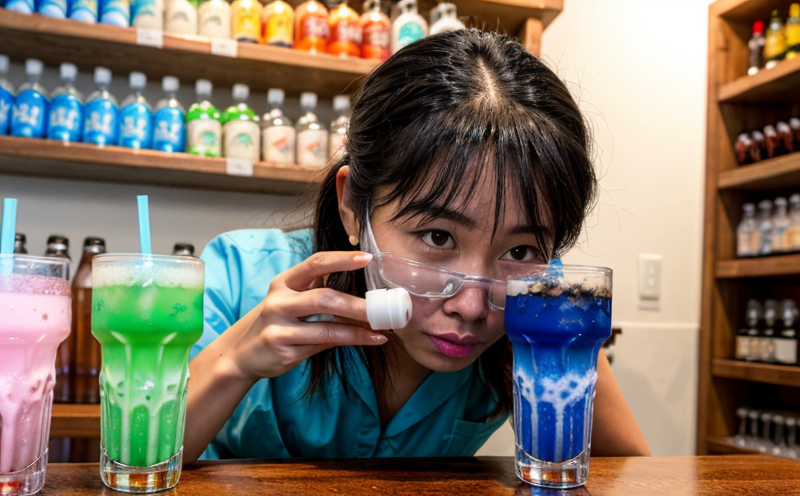AOAC 2011.03 E. coli O157:H7 Detection in Beverages
The AOAC Official Method 2011.03 is a widely recognized standard for detecting E. coli O157:H7 in various food products, including beverages. This method plays an essential role in ensuring the safety and quality of food supplies by identifying potentially harmful pathogens that could compromise public health.
Beverages are particularly susceptible to contamination from E. coli O157:H7, as they can be consumed directly without further cooking or processing. The presence of this pathogen not only poses a threat to human health but also can lead to significant economic losses due to product recalls and brand damage. Thus, the implementation of robust microbiological testing protocols is critical.
The AOAC 2011.03 method involves several steps that ensure accurate detection of E. coli O157:H7. Initially, a suitable sample is prepared by homogenizing and diluting it to appropriate concentrations. This step ensures that the pathogen can be effectively detected without being overwhelmed by other microbial contaminants present in the beverage.
Following preparation, the sample undergoes enrichment using Treponema spp.-selective broth (TSB) for 18 hours at 35°C under continuous shaking. This process allows for the selective growth of E. coli, increasing the likelihood of detecting the pathogen. After enrichment, a series of sequential dilutions are made to further reduce the population size and facilitate accurate enumeration.
The detection step involves inoculating Treponema spp.-selective broth with the serially diluted samples and incubating them for 24 hours at 35°C under continuous shaking. Positive colonies suspected of being E. coli are then identified using biochemical tests such as IMViC (indole, methyl red, Voges-Proskauer, citrate) tests.
The use of this method ensures high sensitivity and specificity in detecting E. coli O157:H7. However, it is important to note that false positives can occur due to cross-reactivity with other strains of E. coli or other bacteria. Therefore, confirmatory tests are often performed using PCR-based techniques for definitive identification.
The AOAC 2011.03 method has been validated for various beverage types including juice, milk, and fruit drinks. Its robustness in detecting E. coli O157:H7 makes it a reliable tool for quality assurance programs in the beverage industry.
| Applied Standards |
|---|
| AOAC Official Method 2011.03 |
Applied Standards
The AOAC Official Method 2011.03 is recognized worldwide for its stringent and reliable approach to detecting E. coli O157:H7. This method aligns with international standards such as ISO and ASTM, ensuring compatibility across different regulatory environments.
| Applied Standards |
|---|
| AOAC Official Method 2011.03 |
| ISO/IEC 17025:2017 for Laboratory Testing and Calibration Services |
| ASTM E2554-18 Standard Practice for Use of Computational Methods in Microbiological Risk Assessment |
Scope and Methodology
The scope of the AOAC Official Method 2011.03 is broad, covering a range of beverage products susceptible to contamination from E. coli O157:H7. This method ensures that all types of beverages are subject to rigorous testing protocols designed to safeguard public health.
The methodology involves several critical steps:
- Sample preparation and dilution.
- Enrichment using Treponema spp.-selective broth (TSB).
- Serial dilutions to reduce population size.
- Inoculation of TSB with serially diluted samples for growth.
- Identification through biochemical tests and PCR confirmation.
The use of this method guarantees accurate detection, ensuring that any contamination is identified promptly. This is crucial for maintaining the integrity of the supply chain and protecting consumers from potential health risks.
| Scope and Methodology |
|---|
| AOAC Official Method 2011.03 |
Customer Impact and Satisfaction
- Enhanced consumer confidence in product safety.
- Reduced risk of product recalls due to contamination.
- Improved brand reputation through demonstrated commitment to quality.
- Compliance with stringent regulatory requirements, including FDA and EU directives.
The implementation of this method has a direct positive impact on the beverage industry by ensuring that products meet high standards of safety and quality. This can lead to increased customer satisfaction and loyalty, as well as improved market positioning for companies adhering to these rigorous testing protocols.





